Definitive Technology BP9080x Speaker System Review
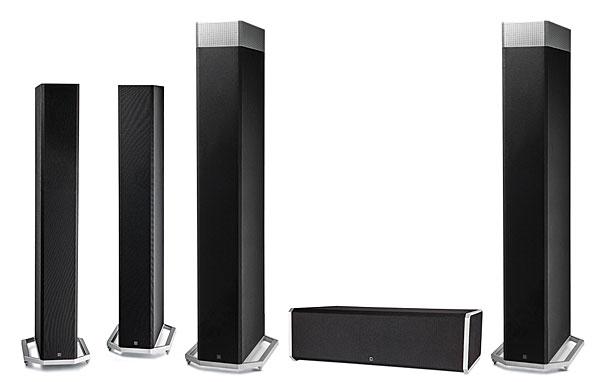
AT A GLANCE
Plus
Spacious bipole sound
Seriously full-range with powered bass section
Astounding dynamics
Minus
Big and demanding of floor space
Reflective bipolar
reproduction may not suit every room, taste
THE VERDICT
A big speaker with a sound to match, Definitive Technology’s latest, Atmos-onboard, powered-tower flagship delivers the impressive imaging depth and breadth we expect from bipoles. Its response is as full-range, and its dynamic abilities as unfettered, as anything I’ve heard from a one-piece system.
Definitive Technology’s monolithic bipolar towers —which launched the brand in 1990—have been around in one form or another almost as long as that thing in 2001: A Space Odyssey. With the fourth generation bowing recently, the Baltimore-area manufacturer set us up with a full suite: BP9080x fronts, CS9080 center, a pair of smallerbut-still-huge BP9060 towers for surrounds, and the A90 elevation speakers (Dolby Atmos-enabled and compatible with DTS:X) to go on top of those surrounds; the marquee BP9080x fronts have the same elevation componentry to bounce height-channel signals off the ceiling built right into their top 5 inches. All except the A90 are powered-woofer designs, with side-firing (up-firing in the case of the CS9080) woofer/passiveradiator arrangements driven by onboard amplifiers, and so they need to be connected to wall power as well as to speaker outputs for their passive mid- and high-frequency sections. (Full disclosure: Our BP9080x pair was marked “engineering sample.” We generally insist on production-run speakers, but such was not available in time for this issue. We were assured our towers were exemplars of initial production in every detail.)
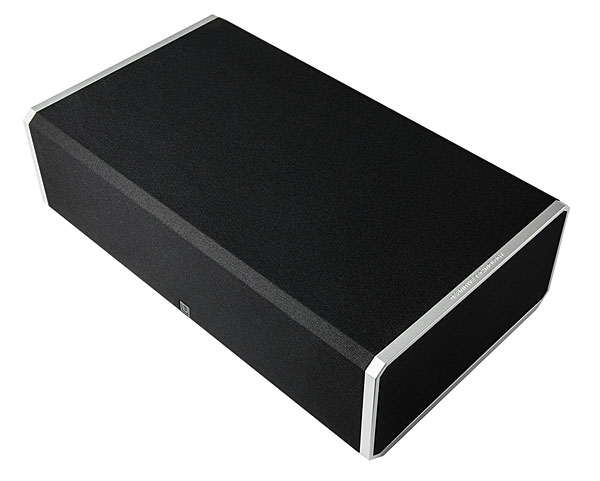
Though this system represents the pinnacle(s) of the new line, smaller and more affordable versions of the BP9060 Atmos module-ready towers are available in the spittin’-image BP9040 ($899 each) and BP9020 ($649 each); additional matching centers are the CS9060 ($699) and CS9040 ($499). And there are two new voice-matched bipole surround speaker models should you choose not to use towers in the rear: the SR9080 ($349 each) and SR9040 ($249 each). A full house, it is.
Not surprisingly, Definitive has made the requisite technology and design improvements attendant to a classic line revamp. Some of the more aesthetic improvements to the towers are mentioned below, but performance of the midrange and tweeter drivers has also been enhanced, and some advanced digital signal processing has been applied to the powered woofer sections to positive effect. See “Inside the BP9000 Series” for a rundown on all that’s new.
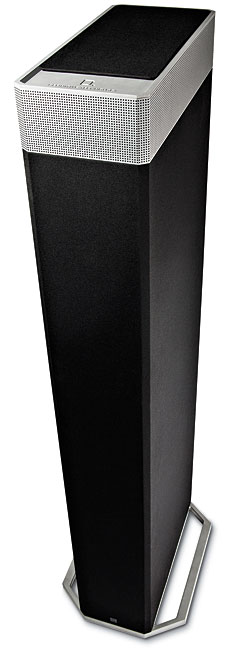 Of course, these wouldn’t be BP’s if they weren’t bipole designs that fire in two directions. In keeping with Definitive’s long practice, the towers each have two midrange/tweeter arrays: a front-facing mid-tweet-mid assembly and a rear-firing mid-tweet array. As you might expect, thanks to all those intentional reflections from room surfaces, bipoles tend to produce a bigger, more spacious, and somewhat more diffuse sonic fingerprint than conventional direct-radiating, front-firing-only, cone ’n’ dome speakers. This can come at a certain penalty in hard-imaged soundstaging, something Definitive addresses with a further refinement in this series of the “Forward-Focused” design it introduced in the 8000 series bipolar. This results in the rear-radiating pattern being attenuated 6 decibels down from the front-firing array.
Of course, these wouldn’t be BP’s if they weren’t bipole designs that fire in two directions. In keeping with Definitive’s long practice, the towers each have two midrange/tweeter arrays: a front-facing mid-tweet-mid assembly and a rear-firing mid-tweet array. As you might expect, thanks to all those intentional reflections from room surfaces, bipoles tend to produce a bigger, more spacious, and somewhat more diffuse sonic fingerprint than conventional direct-radiating, front-firing-only, cone ’n’ dome speakers. This can come at a certain penalty in hard-imaged soundstaging, something Definitive addresses with a further refinement in this series of the “Forward-Focused” design it introduced in the 8000 series bipolar. This results in the rear-radiating pattern being attenuated 6 decibels down from the front-firing array.
These latest-generation BPs are distinguished largely by being Dolby enabled and DTS:X compatible across the board. As mentioned, the flagship BP9080x’s two-way elevation module is built right into each speaker, while the remaining members of the line accept the add-on A90 module. Otherwise, absent those evolutionary improvements in individual drivers, amplifier circuitry, and cabinet design, the new generation seems generally similar in configuration to its predecessors, with numbers, shapes, and types of drivers mostly comparable throughout (again, see the sidebar for details).
Setup
The BP9080x is genuinely good looking, even if those looks suggest a slimmed-down Sub-Zero refrigerator as much as a loudspeaker. The tower comes up nearly to my sternum, and its dramatically slim form and perforated-aluminum penthouse lend a decided presence. The comparatively subdued BP9060s (along with the smaller BP9040 and BP9020 towers) accept the A90 through a clever mortise-and-tenon arrangement that makes both a sturdy mechanical and solid electrical connection when you snap on the module. You simply remove each tower’s magnetically fixed machined-aluminum top panel (nice!), exposing an oblong post-and-socket arrangement cast into the module’s bottom and the tower’s top. The compartment surface has raised ribs reminiscent of an amplifier heatsink—strictly a cosmetic detail here that you’ll see only when you’re installing the module.
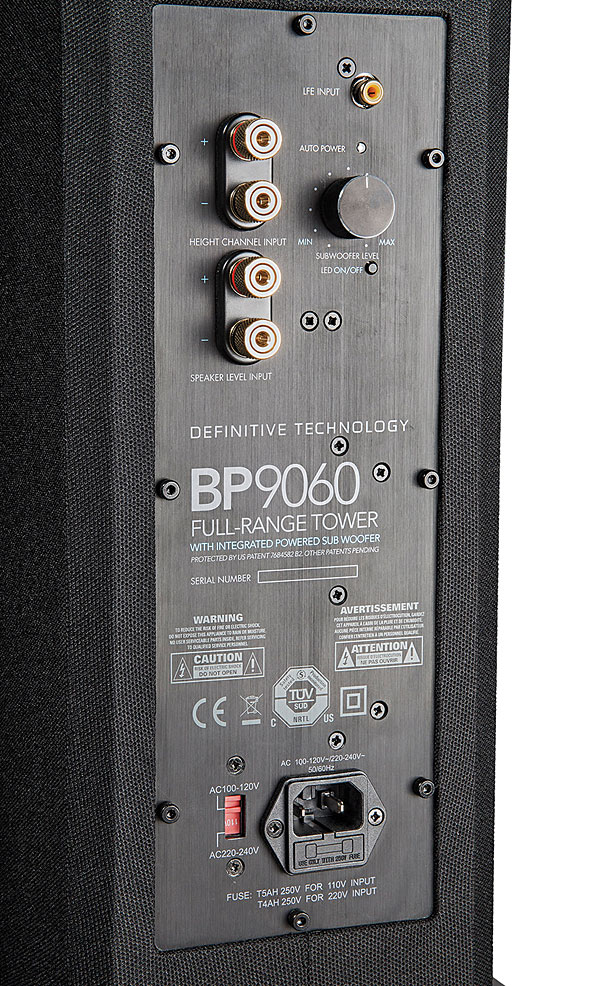
Each BP9080x and BP9060 tower has an IEC power-cable receptacle and level knob for the powered-woofer output that uses the company’s new DSP-driven “Intelligent Bass Control” technology. This is said to allow higher bass output without affecting the mid-to-low-end blend (see sidebar). There are also two sets of multi-way binding posts. But those posts aren’t the usual biwiring connectors: The lower pair feeds the main mid-/high-frequency section, while the upper pair runs to the elevation drivers through the aforementioned connector.
Each tower also furnishes an RCA input marked LFE, for those who wish to connect the line-level subwoofer signal from an AVR or processor instead of letting the speaker employ its own woofer/mid crossover. After confirming operation, I didn’t employ the RCA inputs, for two reasons.
First, I figure the designers of any integrated loudspeaker/powered-woofer system have a better idea of what’s ideal for crossover frequency and curve than I do. Second, I suspect most buyers never use them anyway, opting for the simpler, one-wire option (well, two, counting the power cord—actually, three, counting the elevation-module speaker cable).
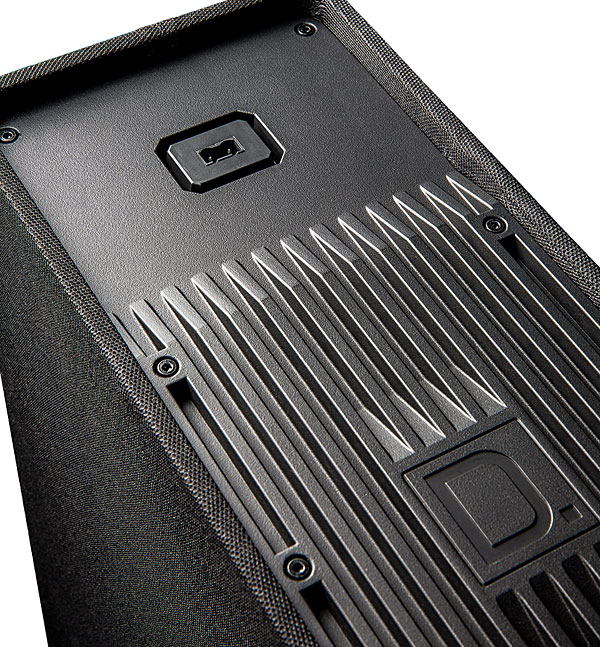
After I finished a rather strenuous unboxing exercise, setting up the Definitives required nothing more than bolting on the provided aluminum outrigger bases, manhandling each speaker into position, and connecting 120-volt and speaker cables (two, in the case of each tower). Since I already have 5.1.4 wiring in place more or less permanently and have lots of AC outlets (I built the room to my own specs), once I dragged my tech/PC bench out of the space that the right-rear tower needed to occupy, a 5.1.4 Atmos suite was arrayed pretty much precisely to Dolby’s angular requirements. Popping on the A90 modules for the surround towers per the procedure mentioned above was the final task prior to tweaking the speaker placements.
Although Definitive suggests that the towers can be placed as little as 4 inches from the rear wall, it’s well accepted that any bipole main-channel speakers—or for that matter, dipoles (like most flat electrostatics or planar magnetics)—benefit from plenty of breathing room between themselves and nearby boundaries. Otherwise, the away-going wavefront can reflect back with so short a delay that its effect might be perceived as frequency-response weirdness (or head-movement-dependent phasey-ness) rather than the big, spacious soundstage we expect from bipoles. Consequently, I placed the BP9080x speakers well out into my room, leaving about 4 feet between their rear panels and the wall behind them. This put them a good couple of feet ahead of my wall-bracket-mounted flat-screen TV and left space for my Seymour-Screen Excellence RM80HD-4K projection screen to drop down behind them. (In a permanent installation, I’d probably move the sound-transmissible screen forward a couple of feet and let it drop just in front of the towers.)
The potential gotcha here— as with any powered tower or big, full-range speaker—is that optimum placement for imaging and that for low-bass evenness aren’t necessarily (or even often) the same. Fortunately, because I’m a veteran of countless placement exercises, I already knew these locations would work, being clear of any of the worst room-mode excitation spots (a foot or so either way in or out would be audibly inferior). But for your room, you may need to perform considerable experimentation, because moving the towers toward or away from the wall can induce substantial changes in bass tightness, boominess, or “weak-spot-ness.” The BP9080x’s individual sub-level knobs come into play here, of course. Once you get the overall “subwoofer” level within range of a decent balance, you really need to listen to each tower individually, on a mono music source, to fine-tune each one’s low-frequency output for its place in the room. In my setup, both knobs ended up well below the “noon” position, partly because I prefer a leaner bass profile.






























































